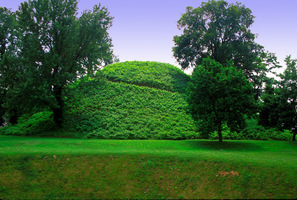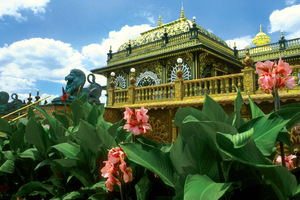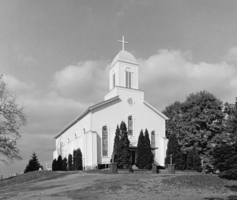 | Back to e-WV
| Back to e-WV
 The West Virginia Encyclopedia
The West Virginia Encyclopedia
 | Back to e-WV
| Back to e-WV
 The West Virginia Encyclopedia
The West Virginia Encyclopedia






Marshall County is situated at the base of the Northern Panhandle. Marshall was created from part of Ohio County on March 12, 1835. The county was named for John Marshall, chief justice of the U.S. Supreme Court (1801–35).
Moundsville, the county seat, was named for Grave Creek Mound, built by Adena Indians between 250 B.C. and 150 B.C. Grave Creek Mound is the largest conical earthen mound in North America and a major West Virginia landmark. Moundsville is also home to the West Virginia Penitentiary. Moundsville was once home to Fostoria Glass.

New Vrindaban was founded in 1968 by the International Society for Krishna Consciousness. New Vrindaban has a temple, a guest lodge, restaurants, gift shops, and various other enterprises, as well as its most impressive structure, Prabhupada’s Palace of Gold, which was constructed by Krishna devotees.

Rosbys Rock is located in Marshall County about seven miles southeast of Moundsville on Big Grave Creek Road. It marks the spot near where on Christmas Eve, 1852, the last spike was driven to complete the Baltimore & Ohio Railroad from Baltimore to the Ohio River, the first rail line linking the Atlantic coast to the Ohio Valley.
Nestled in the hills above the Ohio River on the Marshall-Wetzel county border are the pristine farms of the St. Joseph Settlement, also known as the German Settlement. The people who live here are members of the St. Joseph settlement and the proud descendants of German Catholic immigrants who came to America in the 1850s.

The Ohio River begins at Pittsburgh, with the union of the Allegheny and Monongahela rivers. From there the Ohio travels 981 miles to Cairo, Illinois, where it joins the Mississippi.